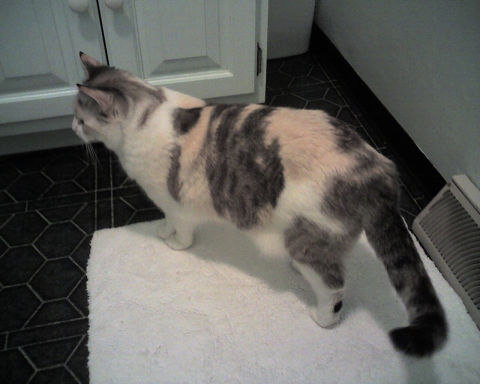
In 1902 Rudyard Kipling answered How the Leopard Got His Spots.
According to Kipling, the Ethiopian and the Leopard originally hunted on the High Veldt where they and their prey matched the plain, sandy landscape. Their prey moved to the forest but when the Ethiopian and Leopard followed them there, the animals they hunted were camouflaged while they “show[ed] up in this dark place like a bar of soap in a coal-scuttle.” They couldn’t catch a thing.
“The long and the little of it is that we don’t match our backgrounds” said the Ethiopian, so he changed the color of his skin and offered to help Leopard change too. “The Ethiopian put his five fingers close together (there was plenty of black left on his new skin still) and pressed them all over the Leopard, and wherever the five fingers touched they left five little black marks, all close together.”
So, says Kipling, that’s how the Leopard got his irregular spots. And why? He needed camouflage in the forest.
More than 100 years have passed. Can science support this story?
Last week the BBC reported on a new study that confirmed Kipling’s “why,” but not his “how.”
Using mathematical models, scientists analyzed the pattern complexities of wild cats’ coats and correlated the complexity levels to the cats’ lifestyles.
Do wild cats have spots and stripes for social reasons? Do the patterns attract mates or repel rivals? No. The models showed that cats living in trees and at low light levels are the most likely to have complex and irregular coat patterns. Notice how the tree-dwelling leopard’s spots are similar to the dappled leaves behind him.
Which brings me to a cat I know very well. She is not wild, she does not live in trees, and she doesn’t have to operate at low light levels. Nevertheless Emmalina has four colors on her coat (white, beige, taupe and black) in an irregular pattern of blotches and stripes.
In our house we’ve learned this pattern makes her disappear when crouched on the kitchen counter, an amazing adaptation for modern life.

(leopard photo from Wikimedia Commons. Emmalina’s photo by Kate St. John.)
I love this story! Adding Emma’s adaptation to modern life at the end brought a huge smile to my face, as it is well known that house cats cannot be found unless they want to be found. My two cats often mimic sofa cushions and throw rugs.
What an absolutely lovely tale to brighten my already lovely fall windy day. Thank you Kate for another wonderful tale and for sharing your cat. I am sure she could care less.
Ah… what a beautiful photo of Emmalina’s coat… now we’d like to see her face!
Faith. .Emmalina is probably thinking you should thank HER for sharing Kate with us!
I guess that’s why my pitch-black Iggy loves the closet!